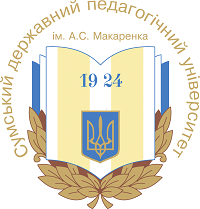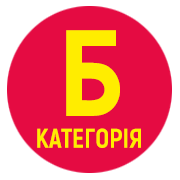MODERN APPROACHES TO THE ORGANIZATION OF MOTOR ACTIVITY OF HIGHER EDUCATION STUDENTS UNDER MARTIAL LAW
DOI:
https://doi.org/10.32782/olimpspu/2025.2.5Keywords:
health-improving motor activity, students, physical education, distance learning, martial law, modern approachesAbstract
The article examines current approaches to organizing health-improving motor activity among students of higher education institutions (HEIs) within the framework of the modern educational process. The importance of physical activity is highlighted as a key factor in maintaining the physical and psycho-emotional well-being of youth in conditions of stress, uncertainty, and limited access to traditional forms of physical education. Contemporary forms and methods of organizing physical activity are analyzed, including the integration of physical activity into the educational process, the use of innovative technologies (fitness programs, online classes, mobile applications), and the individualization of physical load. Special attention is paid to motivational factors that influence students’ engagement in regular physical activity.The authors conducted a comparative analysis of physical education in peacetime and under martial law, identifying key differences in approaches, formats, and means of implementing health-oriented motor activity. The relevance of the study is driven by the need to find effective strategies for organizing students' physical activity under martial law conditions, when traditional forms of physical education are limited or unavailable. A decline in physical activity, caused by restrictions on movement, distance learning, and stress-related factors, negatively affects the overall health of students, requiring new organizational solutions in physical education systems.Based on the analysis, priority directions for improving the system of physical education in higher education institutions under crisis conditions have been identified, namely: the implementation of flexible learning models focused on student self-organization; the use of digital platforms such as Zoom, Google Meet, Moodle, and Classroom; mobile fitness applications and video workouts; enhancement of digital literacy among participants in the educational process; and the integration of physical activity into students' daily lives.The role of the instructor as a coordinator of motor activity and mentor support has been substantiated.The results may be useful for educators, HEI administrators, and curriculum developers in the field of physical education. This opens up new opportunities for building a healthy and productive environment, which is a priority in the context of modern education.
References
Андрєєва О. В., Степанюк В., Хрипко, І. В., Івчатова Т. В. Рухова активність і здоров’я студентів: сучасний стан, проблеми і перспективи. Науковий часопис Українського державного університету імені Михайла Драгоманова. 2024. Вип. №12 (185). С. 9–14.
Микитчик О.С., Кошелева О.О., Сидорчук Т.В., Демідова О.М., Афанасьєв Д.С. Залученість здобувачів вищої освіти до раціонально організованої рухової активності в умовах воєнного стану. Науковий часопис Українського державного університету імені Михайла Драгоманова. 2025. Вип. №1(186). С. 91–94.
Первухіна С. М., Ківерник О. В. Фізична активність студентів вищих навчальних закладів під час воєнного стану. Науковий часопис Українського державного університету імені Михайла Драгоманова. 2024. Вип. №102. С. 48–51.
Рибалко Ліна, Пермяков Олександр, Йопа Тетяна. До проблеми активізації рухової активності студентської молоді в умовах карантинних обмежень Актуальні проблеми фізичного виховання різних верств населення. 2021. Харків: ХДАФК, С. 145–150.
Шестерова Людмила, Пятницька Дар’я. Використання платформ ZOOM та GOOGLE CLASSROOM для проведення занять спортивно-педагогічної спрямованості. Актуальні проблеми фізичного виховання різних верств населення. 2021. Харків: ХДАФК, С.172–177.
Bull FC, Al Ansari SS, Biddle S, et al. Br J Sports Med 2020;54:1451–1462. DOI:10.1136/bjsports-2020-102955 (дата звернення:26.06.2025).
Downloads
Published
Issue
Section
License

This work is licensed under a Creative Commons Attribution-NonCommercial 4.0 International License.







